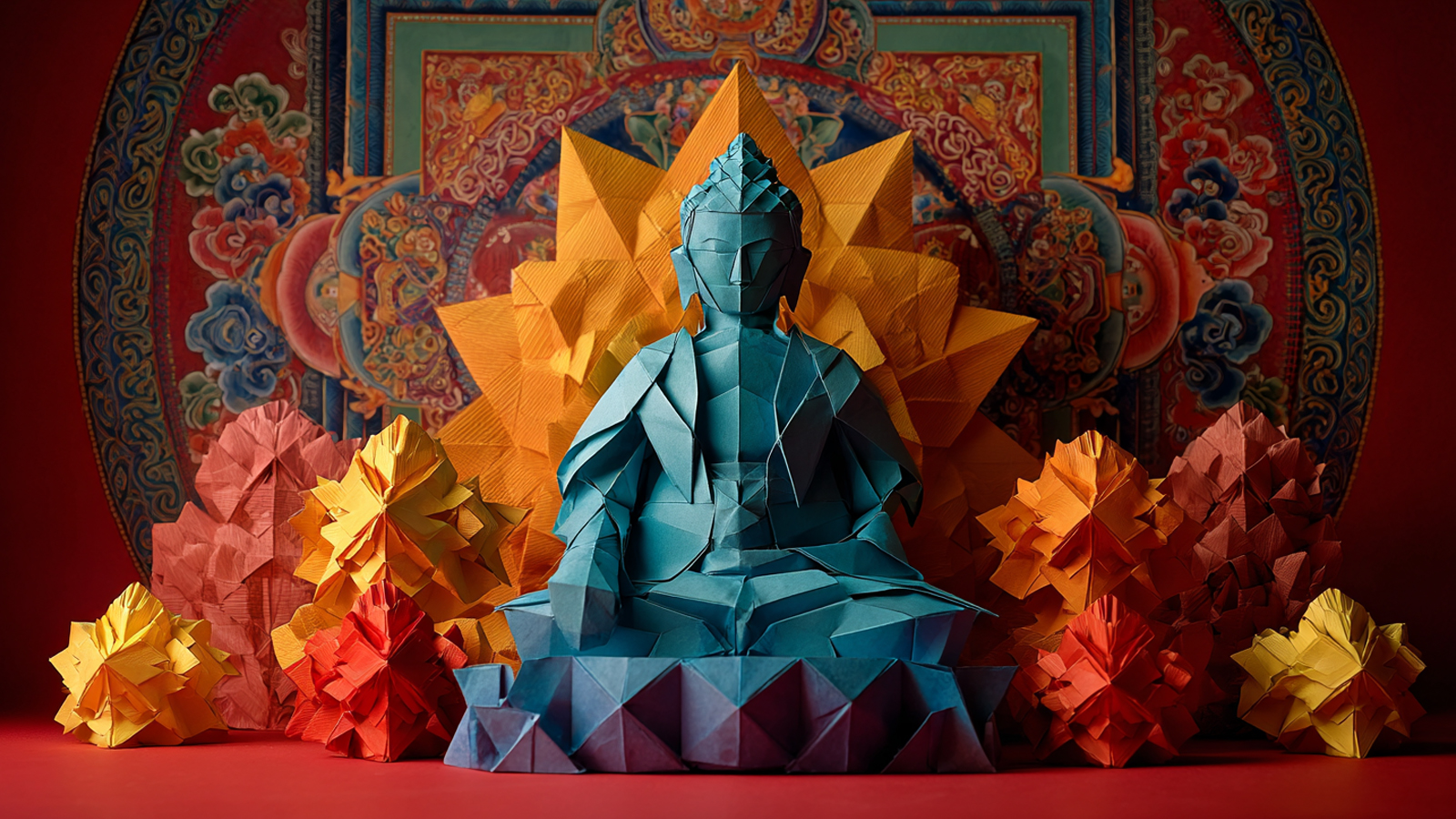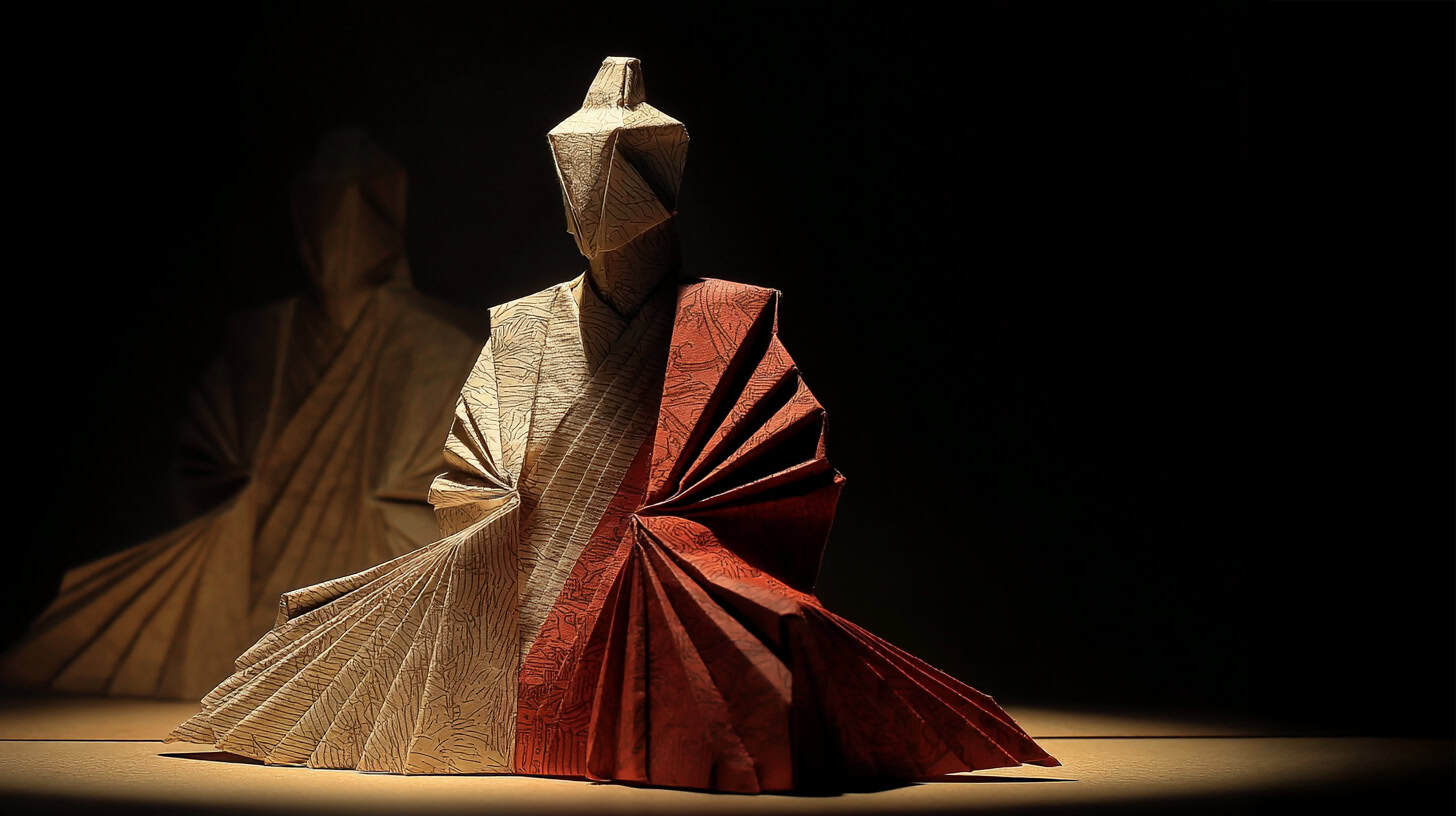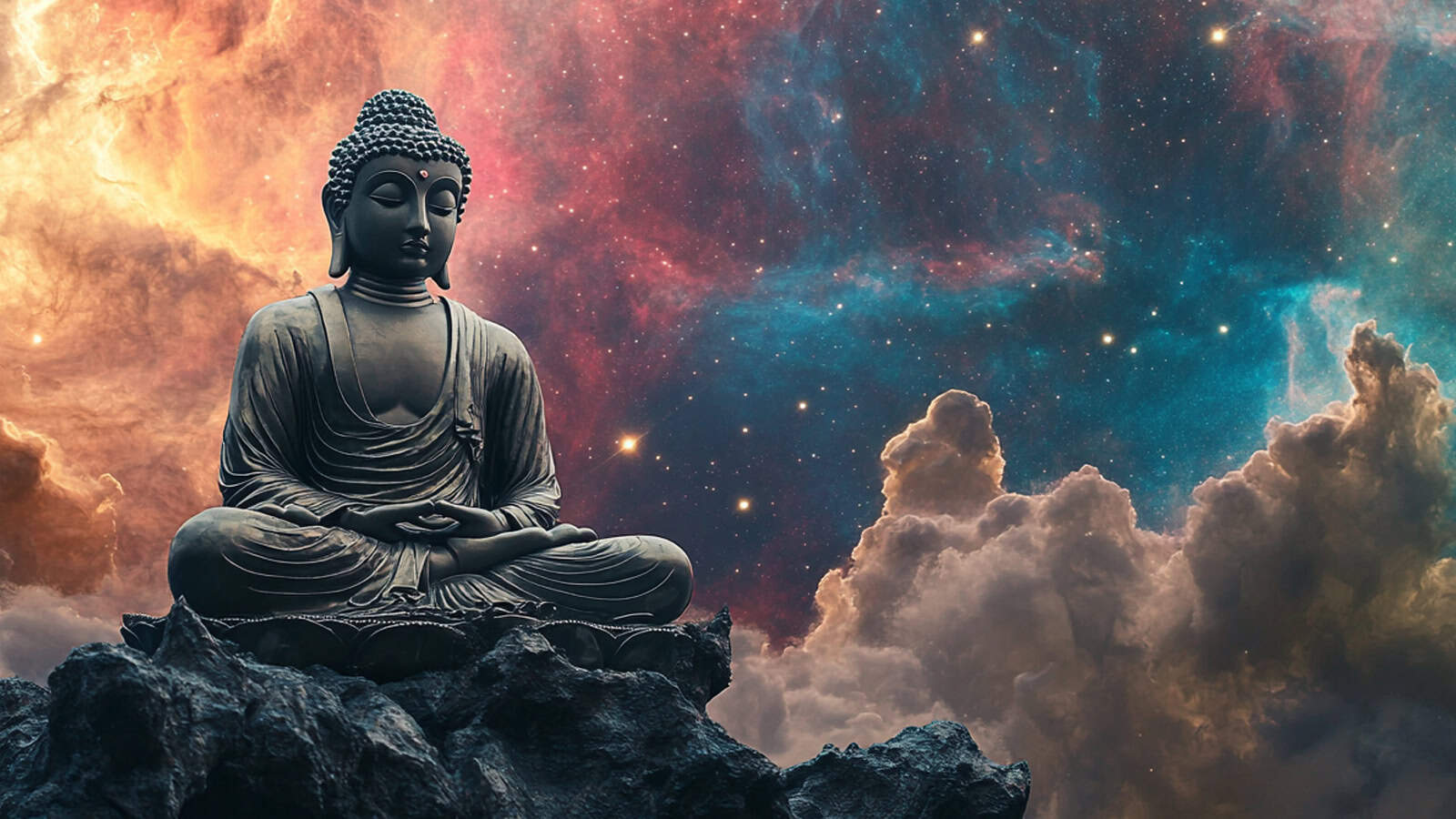Log in or sign up to watch the full discussion.

Become a member to access the full episode
Start building your big picture mind & support the global emergence of Integral consciousness

“Integral Life is the most important and globally-relevant platform for the leading edge of Integral consciousness evolution”
– Eugene P.
Perspective Shift:
- Tantra isn’t sexual gymnastics, it’s the recognition that everything difficult in your life is actually divine energy wearing a disguise. Most people think tantra means advanced bedroom techniques or sacred sexuality workshops, but authentic tantra is consciousness technology for transforming any arising experience through loving awareness. When you meet your rage, fear, or shame with the same presence you’d offer a beloved child, you’re not doing therapy — you’re participating in the fundamental alchemical process through which the universe transforms itself.
- Shadow work is a form of tantric alchemy that transforms the fabric of reality itself. Rather than seeing difficult emotions as problems to solve, tantra recognizes them as energy seeking transformation. When you meet rage, fear, or shame with the five forms of healthy attachment while maintaining loving awareness, you’re not just healing trauma—you’re participating in the fundamental creative process of consciousness itself.
- The transition into meta-awareness can feel like you are losing your mind — because you are. The move from teal to turquoise involves the dissolution of ordinary conceptual frameworks, causing memory issues, spatial disorientation, and existential vertigo. This isn’t pathology—it’s the natural confusion that arises when consciousness begins operating from cosmic rather than human-centric perspectives. You need community to navigate this successfully.
- Grace isn’t religious sentiment, it’s the omnipresent availability of every realization that has ever occurred. Because consciousness is unified across space and time, any awakening that has happened anywhere is fully accessible right here, right now. The question isn’t whether enlightenment is possible, but how to open to the field of realization that’s already saturating this moment.
- Later stages hurt more, but bother you less. As consciousness evolves, you don’t become immune to human suffering — you feel it more deeply, while simultaneously resting in the freedom that transcends it. You’ll cry harder over loss, while recognizing the super-illusion nature of what’s happening. The paradox resolves itself through embodied wisdom rather than conceptual understanding.
Two accomplished tantric practitioners — one from Kashmir Shaivism, the other from Tibetan Vajrayana — share their profound awakening stories and reveal how ancient consciousness technologies can accelerate the challenging transition from teal to turquoise awareness and beyond.
When Ancient Wisdom Meets Modern Psychology: A Guide to Tantric Meta-Awareness
Picture this: You’re 22 years old, sitting in a meditation intensive, when suddenly the lights come on and never go off. Not the fluorescent kind—the consciousness kind. The kind that reveals everything you thought you knew about reality was just the prologue.
Or maybe you’re 28, a successful corporate climber in a fancy Boston apartment, dancing your prayers in desperate misery when suddenly your spine starts undulating like a serpent and you leave your body for what you can only describe as a “kosmic orgasm” that lasts 36 hours and changes everything forever. I mean, who hasn’t been there?
These aren’t mystical fairy tales or New Age fantasies. They’re the real awakening experiences of two accomplished teachers who’ve spent decades learning how to integrate profound spiritual realization with the messy, beautiful complexity of being human in 2024.
We’re about to explore one of the strangest intersections in consciousness studies: where thousand-year-old tantric practices meet cutting-edge developmental psychology, where ancient wisdom traditions provide the rocket fuel for post-conventional growth, and where “losing your mind” might be exactly what’s needed to find your true Self.
The Meta-Awareness Mindf#@k (And Why Your Friends Think You’re Losing It)
Let’s talk about what happens when consciousness evolves beyond the postmodern green stage into what researchers call “meta-awareness” or turquoise consciousness. Fair warning: thing can get a bit weird.
Scott describes it perfectly: “I began to wonder if I was going cuckoo. The thoughts I was having were not really about relative local things. They were like, how does the cosmos all flow together? What’s the picture of how earth life and human life on earth fits into the galaxy? This is such a small pinprick.”
Sound familiar? Welcome to fifth-person perspective, where your center of gravity shifts from human-centric concerns to kosmocentric awareness. Suddenly you’re not just thinking about your mortgage and your relationships — you’re contemplating the fundamental nature of reality, the relationship between consciousness and cosmos, the meaning of existence itself.
Your friends and family start giving you concerned looks. “Are you okay? You seem… different.” They’re not wrong. You are different. Your operating system has upgraded, and you’re now running software that most people can’t even perceive, let alone understand.
When consciousness expands to encompass “all space and time,” navigating a physical body in linear time becomes surprisingly challenging. Scott reports falling down stairs, forgetting basic words, holding walls for balance. The disorientation is real. It’s like trying to parallel park while experiencing unity consciousness—technically possible, but it takes practice.
This isn’t spiritual bypassing or dissociation. It’s the natural confusion that can arise when consciousness begins transitioning into post-conventional perspectives. The problem is that there’s almost no cultural support for this transition. Our mental health system pathologizes it. Our spiritual communities often romanticize it. What’s missing is practical guidance for navigating expanded states while remaining functional, grounded, and relationally available.
Tantra Isn’t What You Think (But It’s Better Than You Imagined)
Let’s clear something up right away: tantra isn’t about advanced sex techniques. That’s like saying Christianity is about head fashion because the pope wears a funny hat.
Real tantra is consciousness technology—specifically, the recognition that everything is energy in different forms, making transformation possible through precise methodologies developed over centuries of experimentation by people who were very, very serious about liberation.
In Scott’s Kashmir Shaivism tradition, tantra is about recognizing what he calls “inner penetration”—the seamless unity of form and formlessness, stillness and dynamism, the absolute and the relative. It’s not about transcending the world but about recognizing that the world is already divine, already perfect, already the play of consciousness itself.
Kimberley’s Vajrayana approach is equally sophisticated but differently flavored. Her tradition works with “creation stage” practices where you literally create divine experience out of emptiness, training to see yourself and others as awakened beings while using death, dreams, and daily rebirth as methods for realization.
Both traditions share a radical premise: instead of treating difficult emotions, challenging circumstances, or shadow material as obstacles to overcome, tantra treats them as energy seeking transformation. You don’t transcend your humanity. You discover its divine nature.
This is why Scott’s mirror practice is so brilliant. By meeting difficult emotions with the five forms of healthy attachment (attunement, safety, soothing, delight, encouragement), you’re not just healing trauma—you’re participating in the fundamental alchemical process through which consciousness transforms itself.
The Mantra Conspiracy: How Ancient Yogis Hacked Reality
Want to know something that will blow your mind? Sanskrit wasn’t invented by humans. According to tradition, it was “heard” (shruti) by yogis in deep meditation who discovered that their subtle energy channels were already shaped like Sanskrit letters.
This isn’t mystical poetry—it’s practical consciousness technology. The understanding is that everything in existence consists of sound vibrations, different combinations of phonemes that create the holographic display we call reality. Mantras aren’t just words you repeat; they’re algorithms for reprogramming consciousness itself.
When you receive a traditional mantra from a lineage holder, you’re not just getting a sound formula. You’re accessing the accumulated realization of countless beings who achieved awakening through that specific vibrational pattern. Their liberation, their insight, their energetic attainment is encoded in the mantra itself.
This is why Scott emphasizes that you don’t sit around making up mantras. That would be like trying to perform brain surgery after watching a YouTube video—technically possible, but probably not advisable. These sound formulas have been tested and refined over centuries. They work because they’ve always worked, in the hands of people who knew what they were doing.
The key insight is that your beingness itself is algorithmic. You could say you’re a collection of algorithms—patterns of energy, thought, emotion, and behavior that create your current experience of selfhood. If you want to transform something, you need to interrupt its existing rhythm and introduce a new pattern with greater coherency.
That’s what mantra practice accomplishes. It’s not positive thinking or spiritual mood music. It’s precision engineering for consciousness itself.
The Shadow Work Revolution: How to Turn Your Shit Into Gold
Here’s the thing about shadow work that most people get wrong: it’s not therapy. It’s alchemy.
Traditional therapy often approaches difficult emotions as problems to solve, symptoms to eliminate, or wounds to heal. Tantric shadow work recognizes them as energy seeking transformation—raw material for consciousness evolution.
When Scott sits in front of the mirror and meets his rage, fear, or shame with loving awareness, he’s not trying to get rid of these emotions. He’s recognizing them as manifestations of the same consciousness that appears as love, joy, and peace. The difference isn’t in the energy itself but in how consciousness relates to that energy.
This is profound because it means nothing needs to be eliminated or transcended. Everything can be included, metabolized, transformed. Your anger isn’t a spiritual problem—it’s spiritual fuel. Your anxiety isn’t evidence of your inadequacy—it’s energy available for awakening.
The five forms of healthy attachment that Scott uses (attunement, safety, soothing, delight, encouragement) aren’t just therapeutic techniques. They’re transmissions of how awakened consciousness relates to all arising phenomena. When you offer these to your own difficult parts, you’re practicing being divine—literally training yourself to respond to life the way an awakened being would.
This has massive implications for how we understand personal transformation. Instead of spending years trying to “fix” yourself, you can learn to love yourself into wholeness. Instead of battling your shadows, you can alchemize them through conscious relationship.
Integration: How to Stay Human While Becoming Divine
Here’s the real challenge of advanced spiritual development: how do you integrate cosmic consciousness with paying your taxes? How do you hold ultimate truth while dealing with your difficult neighbor? How do you embody divine love while your teenager is having a meltdown?
This is where most spiritual teaching falls short. We get plenty of instruction on accessing expanded states but precious little guidance on living from them sustainably. We learn how to touch the infinite but not how to grocery shop from unity consciousness.
Both Scott and Kimberley have spent decades working on this integration challenge, and their insights are hard-won. The key isn’t choosing between transcendent awareness and human engagement—it’s learning to live in both simultaneously.
This requires what Kimberley calls “developmental Vajrayana”—traditional practices enhanced by psychological sophistication. You need the state access that contemplative traditions provide, but you also need the developmental wisdom that helps you navigate expanded consciousness without losing your ground in consensus reality.
It means learning to hold both the absolute truth (everything is perfect divine play) and the relative truth (suffering is real and requires compassionate response) without collapsing into either extreme. It means developing “vertex” experiences—moments where you can access the view from the top of the mountain while keeping your feet firmly planted on the ground.
Most importantly, it means remembering that spiritual development doesn’t eliminate your humanity, it reveals its divine nature. You don’t transcend being human; you discover what being human actually means.
Welcome to the Age of Embodied Awakening
We’re living in an unprecedented moment in human history. Never before have so many people had access to such sophisticated spiritual technologies. Never before have we understood so much about how consciousness develops and transforms. Never before have traditional wisdom and modern psychology converged so powerfully.
But with great power comes great responsibility. These tools can accelerate awakening, but they can also amplify confusion if used unconsciously. They can catalyze genuine transformation, but they can also enable spiritual bypassing on an epic scale.
The key is approaching this work with what Scott and Kimberley demonstrate throughout their conversation: intellectual humility combined with experiential boldness. Recognize that you’re working with forces much larger than your personal understanding, but don’t let that stop you from engaging wholeheartedly.
Every spiritual tradition was once an experiment. The Buddha didn’t know he was founding Buddhism; he was just trying to end suffering. The tantric masters weren’t creating religions; they were developing technologies for liberation. The developmental researchers aren’t building new spiritual systems; they’re mapping the territory of human potential.
You’re part of this ongoing experiment. Your willingness to grow, to question, to integrate ancient wisdom with contemporary insight is contributing to the collective awakening of our species. Your individual development serves something much larger than your personal liberation.
Scott and Kimberley are pointing toward what might be possible: communities of practice where traditional contemplative technologies are enhanced by developmental sophistication, where ancient wisdom is grounded in psychological maturity, where awakening and growing up happen together, step by step.
This is the invitation: to use these tools not as escape from the human condition, but as means for discovering its divine nature. To approach spiritual practice not as a performance, but as participation in the greatest adventure in consciousness the world has ever seen.
The lights are already on. They never went off. Take a look and see.
 Key Questions
Key Questions
Here are some questions you can contemplate while listening to this discussion. We suggest you take some time to use these as journaling prompts.
- How do my awakening experiences—whether dramatic or subtle—relate to my overall developmental journey? Am I trying to force spiritual states, or am I creating conditions for natural unfolding while doing the necessary ego development work?
- What would it mean to recognize that my current “problems” might actually be the raw material for my next developmental leap? How can I meet my edges with the same loving awareness that Scott and Kimberley describe in their tantric practices?
- When I feel like I’m “losing my mind” or experiencing disorientation in my spiritual growth, how do I distinguish between healthy developmental confusion and patterns that need professional support? Who in my life can reflect back my growth edges with both love and unflinching honesty?
- What parts of myself am I still trying to fix, transcend, or get rid of rather than meeting with the five forms of healthy attachment? How might my relationship with my own difficult emotions change if I viewed them as energy seeking transformation rather than problems to solve?
- When I look in the mirror, what do I actually see and feel? Can I practice offering myself attunement, safety, soothing, expressed delight, and support for my best self—especially when activated or triggered? What would change in my relationships if I could give myself what I’ve been seeking from others?
- How often do I catch myself in the act of projection—recognizing that my experience of others is largely an idea in my mind based on past conditioning? What would shift if I truly understood that I’m always looking at my own mental constructions rather than objective reality?
- If everything is consciousness manifesting as energy, how does this understanding transform my relationship to both pleasant and unpleasant experiences? What would it mean to meet all arising phenomena as opportunities for alchemical transformation?
Previous Episodes of Evolving Spirit

Become a member to access the full episode
Start building your big picture mind & support the global emergence of Integral consciousness

“Integral Life is the most important and globally-relevant platform for the leading edge of Integral consciousness evolution”
– Eugene P.
About Kimberley Lafferty
Kimberley Theresa Lafferty is a seasoned teacher-practitioner specializing in constructive developmental psychology and Indo-Tibetan Vajrayana. She leads multi-year, private spiritual education cohorts with the Confluence Experience. Kimberley co-leads, with Terri O’Fallon, the penultimate Minds I year-long developmental course of Stages International. She is an active Board member for the Association for Spiritual Integrity. Kimberley is also a wife and mother to a young son, living in a remote valley of the North Cascades of North America which deeply impacts her worldview and practice.
About Scott Schwenk
Host and creator of the podcast The Choice To Grow, Scott is known for his hugely popular courses and workshops with OneCommune.com, Younity.com, Wanderlust Festivals, and Unplug Meditation, Scott has been catalyzing the inner evolution of others for decades: helping them to grow, transform obstacles into opportunities, and find Love within. Scott spent several years living and studying in a meditation monastery which introduced him to the core body of Tantric meditation traditions which continue to flow through each of his teachings. Scott continues to study and teach from two key Tantric lineage streams.









